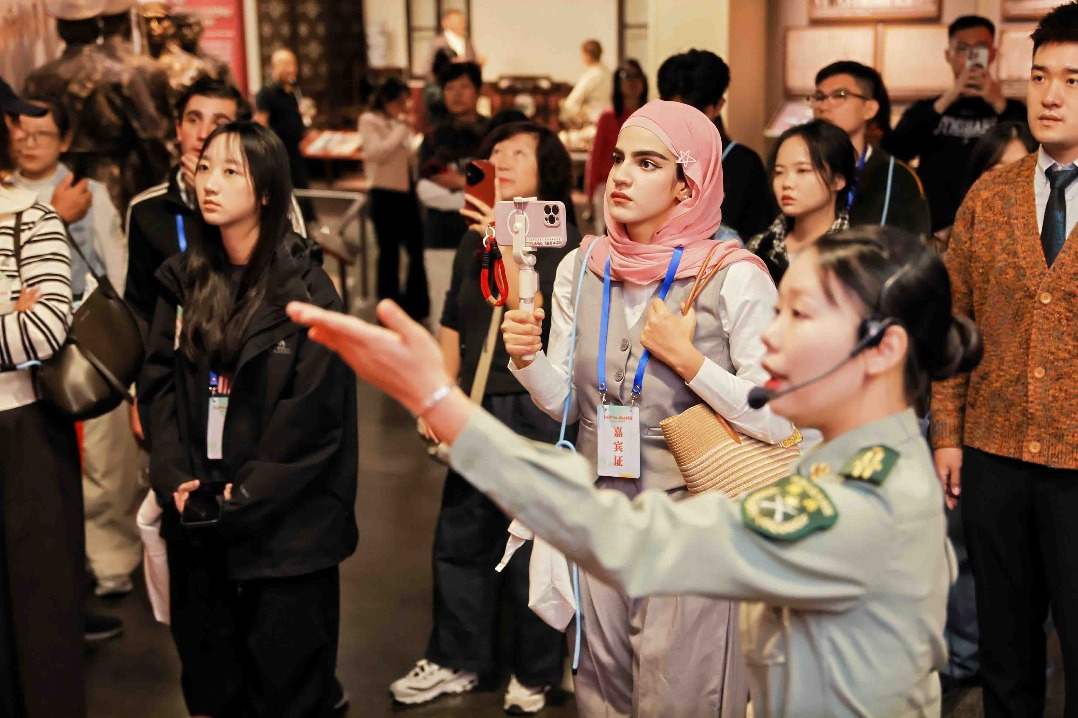Chinese medical workers help fight malaria
Significant progress achieved by mass drug administration, building bridges of trust and understanding


On top of using the medicine to treat malaria, Chinese scientists have seen its potential in preventing infections and interrupting transmission by delivering the drug to the entire population in a region — an approach called mass drug administration.
The strategy has yielded great outcomes in other African countries. During the team's first mission in Africa in 2006 in Comoros, a trial program managed to push down the incidence rate by more than 98 percent within three months.
Despite the successful precedent, Li understood that gaining trust, respect and recognition was no less significant. So among the team's first and foremost tasks was surveying the local situation and building a rapport with local people.
"We found that the nation's disease control and prevention center could only provide limited and outdated data, so it immediately occurred to us that it was necessary to obtain a more accurate and updated tally of infections," said Li.
For about eight months, Li and his team visited all of the country's 291 villages, with a total population of less than 200,000 at the time.
They posed simple and basic questions such as how many family members were in a household, whether they had contracted malaria in recent years and what symptoms they had experienced.
But progress was slow, and stalled largely due to language barriers.
"The nation speaks Portuguese, and the interpreter we had found it difficult to translate some medical terms we used and was only able to convey about 70 percent of the gist of our words," said Li.
The team persisted, soliciting help from disease control workers who already had local connections, and the efficiency with interpreters gradually improved. After eight months of traversing rainforests and rivers, and weeks of organizing materials, they managed to obtain a clear picture of the disease's local spread.
However, tougher issues loomed when they tried to promote Chinese medicine and their strategy of mass administration.
"I was deeply anxious because local people simply didn't know the benefits of our approach, let alone agree to take our drugs," said Li.
The team exhausted all means to construct a bridge of understanding and friendship with them. "We held numerous meetings and talks with people from all walks of life, from senior public health workers to rural clinic doctors, and from government officials to villagers," said Li.
"In addition, we held international symposiums on malaria control, offered free healthcare services to earn their trust, and even invited our collaborators from Comoros to demonstrate the strategy's outcome."
A turning point came when the team was able to trial their methods in a village in July 2019. The village, with a population of about 500, saw over 1,000 infections each year, meaning each villager contracted the disease twice or more annually.
After three rounds of mass delivery of the Chinese-made medicine, the incidence rate of malaria from the initiation of the program to March the following year dropped by 80 to 90 percent compared to the same period of the past three years.
"The outcome not only won genuine recognition from local health workers and officials, but also boosted our confidence in advancing our work," he said.
Li is now one of the 40 team members of the anti-malaria foreign medical group under the Guangzhou University of Chinese Medicine's Artemisinin Research Center. Like Li, 75 percent of team members are aged 35 or under.
The group was founded in 1989 and completed its first overseas mission in Cambodia. But the group's early history can be traced to 1967 when Li Guoqiao, chief professor at the institute, participated in initial research into artemisinin, created a combination therapy and later spearheaded foreign aid in Southeast Asia and Africa.
While Li Guoqiao represents the first generation of the group, Song Jianping, now head of the institute, followed in his footsteps to deliver the medicine to more people across the globe, incorporate traditional Chinese medicine principles into the use of the medicine and promoted the group's anti-malaria strategy based on mass administration in nations that needed assistance.
Li Mingqiang said that he and the remaining team members represent the third generation of the project. So far, they have offered medical aid targeting malaria control to Comoros, Togo, Papua New Guinea, Sao Tome and Principe among other countries.
"We have inherited rich and valuable knowledge and experiences from these senior scientists," he said. "And we are aiming to spread the Chinese-made strategy to more countries across the world."
- Gen-Z Taiwan volunteer joins Minqin's desert afforestation efforts
- Over 20 Gen Z foreign guests to explore Baise city in Guangxi
- Japanese prime minister criticized over provocative Taiwan remarks
- Beijing's air quality improves further
- Lancang-Mekong countries vow to target telecom and cyber fraud
- China slams Japanese leader for refusing to withdraw her remarks





































